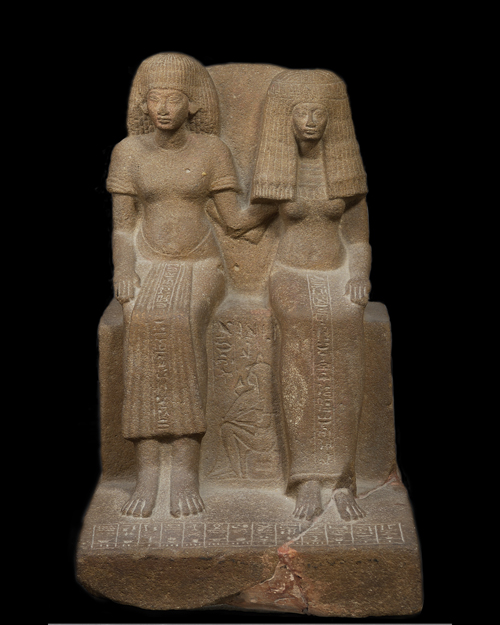
© 2002 Musée du Louvre / Christian Décamps
Memphis
New Kingdom, 18th dynasty (?),
reign of Amenhotep III, c. 1390-1352 BC
Quartzite
H.: 46.2 cm; W.: 29 cm; D.: 31.5 cm
Department of Egyptian Antiquities, Musée du Louvre
(A 116)
Egyptian statues placed in the tomb chapel guaranteed eternal life to the physical presence of the deceased. They were also recipients of the offerings linked to funeral rites that insured eternal sustenance. In this sculpted group, Yuyu, a guard of the house of money, and his wife Tiy are shown seated on cubic bench with low back. Husband and wife link their arms in a sign of affection. The man wears a curled wig and the woman a three-part hairpiece. Their garments indicate a relatively high social standing. A text directed at the living is engraved on the statue, which constitutes a go-between between the dead and the living. The statues placed in the tomb solicit the generosity of the living by asking them to bring a repast to the dead, in exchange for compensation. Such offerings might be real, or might just involve reciting the formula inscribed on the statue, along with a prayer for the deceased. Since speech was endowed with life, a spoken offering would actually exist, magically. These calls to the living were related to the Egyptians’ desire to maintain their tombs and to perpetuate their funeral rites, two conditions required for their survival. The deceased stressed his or her good behavior and worthiness. The gods invoked would then apportion to the deceased part of the offerings made to them.